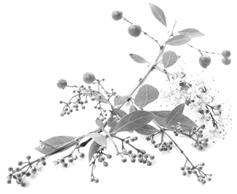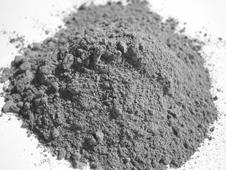|
Henna
Dictionary definition yellowish‑red dye from Egyptian
privet.
 The
Hebrew word ko'pher, twice translated "camphire" in the A.V., is
generally considered to be 'henna' and is so rendered in many modern Bible
translations. This shrub, mentioned only in The Song of Solomon (1:14; 4:13),
still grows wild in Palestine. Ordinarily the henna plant's maximum height is
about ten feet, roughly 3 metres. It bears clusters of small cream‑coloured,
four‑petal flowers at the tips of its branches, their strong fragrance being
especially enjoyed by Middle Eastern peoples. Often a sprig of henna is put in
bouquets, and women wear it in their hair. The
Hebrew word ko'pher, twice translated "camphire" in the A.V., is
generally considered to be 'henna' and is so rendered in many modern Bible
translations. This shrub, mentioned only in The Song of Solomon (1:14; 4:13),
still grows wild in Palestine. Ordinarily the henna plant's maximum height is
about ten feet, roughly 3 metres. It bears clusters of small cream‑coloured,
four‑petal flowers at the tips of its branches, their strong fragrance being
especially enjoyed by Middle Eastern peoples. Often a sprig of henna is put in
bouquets, and women wear it in their hair.
 From
ancient times henna has been employed as a cosmetic. The pulverised leaves of
the plant are combined with hot water to form a paste, which is applied to the
part of the body to be dyed and then is usually left overnight. When the henna
paste is washed off, the stain, commonly an orange or reddish colour, remains.
It lasts for about three weeks, after which another application is required.
Henna has been used to dye the nails of fingers and toes, fingertips, hands and
feet, beards, hair, and even the manes and tails of horses, as well as skins and
leather. Testifying to its ancient usage are findings of Egyptian mummies with
stained fingernails. Also, the Hebrew root from which ko'pher is thought
to be derived has been defined as "to smear," seemingly indicative of its use as
dye. From
ancient times henna has been employed as a cosmetic. The pulverised leaves of
the plant are combined with hot water to form a paste, which is applied to the
part of the body to be dyed and then is usually left overnight. When the henna
paste is washed off, the stain, commonly an orange or reddish colour, remains.
It lasts for about three weeks, after which another application is required.
Henna has been used to dye the nails of fingers and toes, fingertips, hands and
feet, beards, hair, and even the manes and tails of horses, as well as skins and
leather. Testifying to its ancient usage are findings of Egyptian mummies with
stained fingernails. Also, the Hebrew root from which ko'pher is thought
to be derived has been defined as "to smear," seemingly indicative of its use as
dye.
|